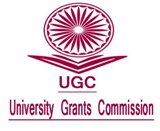Factors affecting Yield Gap of Rice in North Kerala
DOI:
https://doi.org/10.26725/JEE.2021.1.33.6549-6557Abstract
Yield gap is an important indicator for any crop. Rice being the staple food, in order to meetthe increased demand of rice juxtaposed with an increasing population growth, it becomes important to study the factors affecting yield gap that will emerge as the most significant solution, which in turn serves to bridge the yield gap. This study was conducted in 7 districts of Kerala during the year 2020-2021 to find out the factors affecting the yield gap of rice. Altogether, 105 rice farmers from the districts of Kasaragod, Kannur, Wayanad, Kozhikode, Malappuram, Thrissur formed the sample. Ex-post facto research design was used for the study. The yield gap index derived from the study ranged from 10 to 30 per cent. The results of the Principal Component Analysis revealed that five components namely climatic factors, biological factors, socio-economic factors, institutional/policy related factors and factors related to technology transfer were critically influencing the yield gap of rice.References
Alam, M. M., Karim, M. R., & Ladha, J. K. (2013). Integrating best management practices for rice with farmers' crop management techniques: a potential option for minimizing rice yield gap. Field Crops Research, 144, 62–68.
Boling, A. A., Bouman, B. A. M., Tuong, T. P., Konboon, Y., & Harnpichitvitaya, D. (2011) Yield gap analysis and the effect of nitrogen and water on photoperiod- sensitive Jasmine rice in north-east Thailand. NJAS - Wageningen Journal of Life Sciences, 58 (1), 11–19.
Economic Survey. (2022). Government of India, pp.243-245
Hanson, H., Borlaug, E., & Anderson, R.G. (1982). Narrowing the yield gap. Wheat in the third world. West View Press, Colorado. pp. 127-133.
Joshi, N. S., Bariya, M. K., & Kunjadia, B. B. (2014). Yield gap analysis through front line demonstration in wheat crop. International Journal of Scientific and Research Publication, 4 (9), 1-3.
Kulkarni, S., Renuka, B., Arvind, R., & Prakash, S. (2018). Impact of frontline d e m o n s t r a ti o n o n a d o p ti o n o f improved practices of sunflower (Helinathus annuuss L.). International Journal of Current Microbiology and Applied Sciences, 7 (9), 2511-2515.
Kumar, B.M., & Kunhamu, T.K. (2021). Ecological and historical perspectives of rice cultivation in Kerala: a synthesis. Oryza. 58 (2), 241-261
Kumar, J., Singh, Y. P., & Rana, D. K. (2014). Yield and gap analysis of wheat (Triticum aestivum) productivity in NCR Delhi. Indian Journal of Extension Education, 50 (1 & 2), 56-58.
Kumari, L. S., (2012). Status paper on rice in Kerala[on-line]. https://riceportal.in/sites/default/files/ris/ricestatewiseSta tuspaperonriceinKerala2012.pdf
Lobell, B. D., Cassman, G.K., & Field, B.C. ( 2009 ) . Crop Yield Gaps: Their Importance, Magnitudes, and Causes. The Annual Review of Environment and Resources, 33,1-26
Manilal, K. S. (1991). Ethnobotany of the Rices of Malabar in Contribution to Ethnobotany of India . Scientific Publishers, Jodhpur. pp. 243–253.
Mondal, M.H. (2011). Causes of yield gaps and strategies for minimizing the gaps in different crops of Bangladesh. Journal of Agricultural Research, 36 (3), 469-476
Ran, Y., Chen, H., Ruan, D., Liu, H., Wang, S.,Ta n g , X . a n d W u , W. ( 2 0 1 8 ). Identification of factors affecting rice yield gap in southwest China: An experimental study. PLoS one, 13(11), 1- 15
RAP (Regional Office for Asia and the Pacific). (2000). Bridging rice yield gap in the Asia-pacific region. FAO. pp. 84-111
Stuart, A. M., Pame, A. R. P., Silva, J. V., D i k i t a n a n , R . C . , Ru t s ae r t , P. ,Malabayabas, A. J. B., Lampayana, R. M., Radanielsona, A. M., & Singletona G. R. (2016). Yield gaps in rice-based farming systems: insights from local studies and prospects for future analysis. Field Crops Research, 194, 43–56.
Subba, R.D.P &Subramanyam, M. (1987). Non-parametric approach to ANOVA. Journal of Indian Society of Agricultural Statistics. 39 (2): 148-153
Thomas, A. & Kumar, K. (2015). Technology needs assessment in the homegarden systems. Journal of Extension Education. 27 (4): 5556-5563
Umezuruike, O., & François, M. (2001). Food Traceability from Field to Plate. Outlook on Agriculture, 30 (4), 239-247.
Varma, M.S. (2017). Soaring rice price forces Kerala to eye Rs 100 cr worth buy from W e s t Ben g a l [ o n - l i n e ] .https://www.financialexpress.com/market/commodities/kerala-government- to-buy-rice-worth-100-crore-from-west-bengal/570436
Downloads
Published
How to Cite
Issue
Section
License
Copyright (c) 2021 https://creativecommons.org/licenses/by-nc-sa/4.0/

This work is licensed under a Creative Commons Attribution-NonCommercial-ShareAlike 4.0 International License.
Authors who publish with JEE agree to the following terms:
- Authors retain copyright and grant JEE right of first publication with the work simultaneously licensed under a Creative Commons Attribution License that allows others to share the work with an acknowledgement of the work's authorship and initial publication in this journal.
- Authors are able to enter into separate, additional contractual arrangements for the non-exclusive distribution of the journal's published version of the work (e.g., post it to an institutional repository or publish it in a book), with an acknowledgement of its initial publication in this journal.
- Authors are permitted and encouraged to post their work online (e.g., in institutional repositories or on their website) prior to and during the submission process, as it can lead to productive exchanges, as well as earlier and greater citation of published work (See The Effect of Open Access).
Extension Education Society
https://creativecommons.org/licenses/by-nc-sa/4.0/
This work is licensed under a Creative Commons Attribution-NonCommercial-ShareAlike 4.0 International License.













.png)

